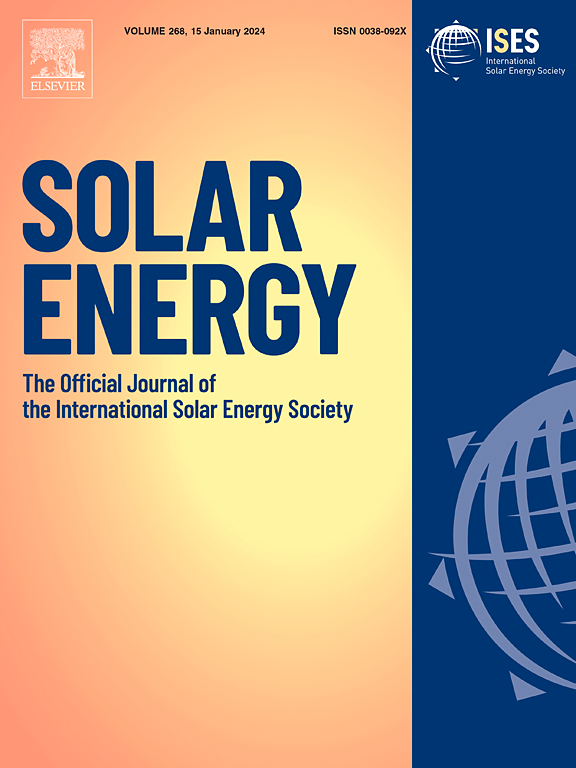单结过氧化物太阳能电池中的无机 Zn2SnO4 电子传输层实现了超过 32.85 % 的高效性能
IF 6
2区 工程技术
Q2 ENERGY & FUELS
引用次数: 0
摘要
过氧化物太阳能电池的性能在很大程度上取决于电子传输层(ETL)的光电特性。在本研究中,我们采用基于自旋轨道耦合的混合密度泛函理论的第一性原理方法,研究了作为包晶太阳能电池 ETL 理想候选材料的 Zn2SnO4 的结构、电子和光学特性。在结构特性方面,我们计算了晶格常数、键长和形成能,显示出稳定的原型结构。我们对电子结构的分析表明,Zn2SnO4 具有较宽的直接带隙,这促进了有效的载流子萃取,并与实验测量结果密切相关。此外,我们还研究了有效质量、介电常数、吸收系数和激子结合能。此外,我们还研究了在标准平面器件结构中使用 Zn2SnO4 作为 ETL 的单结太阳能电池的光电效率。通过数值模拟,我们确定 FTO/Zn2SnO4/Perovskite/Spiro-MeOTAD/Au 配置的最佳电池效率为 ∼32.85 %。此外,我们还对过氧化物太阳能电池装置与二氧化锡 ETL 的性能进行了比较分析。我们的研究结果表明,Zn2SnO4 的电池效率优于 SnO2。这些结果与之前报道的实验观察结果非常吻合,并强调了将第一原理计算与传统器件模拟相结合,对评估包晶体太阳能电池性能的有效性。本文章由计算机程序翻译,如有差异,请以英文原文为准。
Inorganic Zn2SnO4 electron transport layer in single-junction perovskite solar cells achieving highly efficient performance exceeding 32.85 %
The performance of perovskite solar cells heavily relies on the optoelectronic characteristics of the electron transport layer (ETL). In this study, we use the first-principles methods, based on hybrid density functional theory with spin–orbit coupling, to examine the structural, electronic, and optical properties of Zn2SnO4 as promising candidate for the ETL in perovskite solar cells. Within the scope of structural properties, the lattice constants, bond lengths, and energy of formation are computed, showing a stable prototype structure. Our analysis of the electronic structures demonstrates that Zn2SnO4 has a wide direct band gap, which promotes efficient carrier extraction and correlates well with experimental measurements. Furthermore, the effective masses, dielectric constant, absorption coefficient, and exciton binding energy are studied. Additionally, we examine the photovoltaic efficiency of single-junction solar cells utilizing Zn2SnO4 as ETL in a standard planar device structure. The optimal cell efficiency obtained from the numerical simulation for the FTO/Zn2SnO4/Perovskite/Spiro-MeOTAD/Au configuration is determined to be ∼32.85 %. Furthermore, we conduct a comparative analysis of the performance of perovskite solar cell device with SnO2 ETL. Our findings reveal that Zn2SnO4 exhibits superior cell efficiency compared to its SnO2 counterpart. These results align well with previously reported experimental observations and underscore the efficacy of combining first-principles calculations with conventional device simulations for evaluating perovskite solar cell performance reliably.
求助全文
通过发布文献求助,成功后即可免费获取论文全文。
去求助
来源期刊

Solar Energy
工程技术-能源与燃料
CiteScore
13.90
自引率
9.00%
发文量
0
审稿时长
47 days
期刊介绍:
Solar Energy welcomes manuscripts presenting information not previously published in journals on any aspect of solar energy research, development, application, measurement or policy. The term "solar energy" in this context includes the indirect uses such as wind energy and biomass
 求助内容:
求助内容: 应助结果提醒方式:
应助结果提醒方式:


